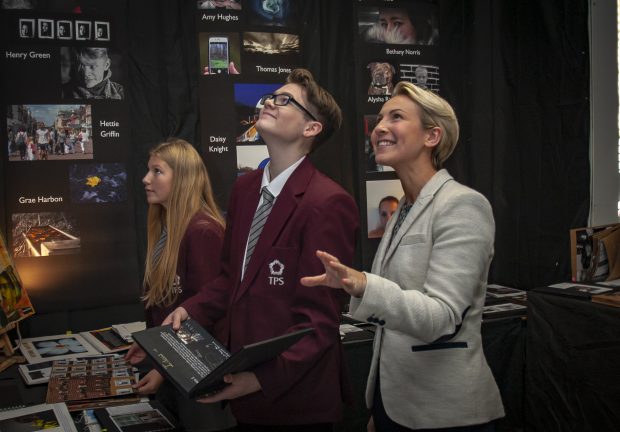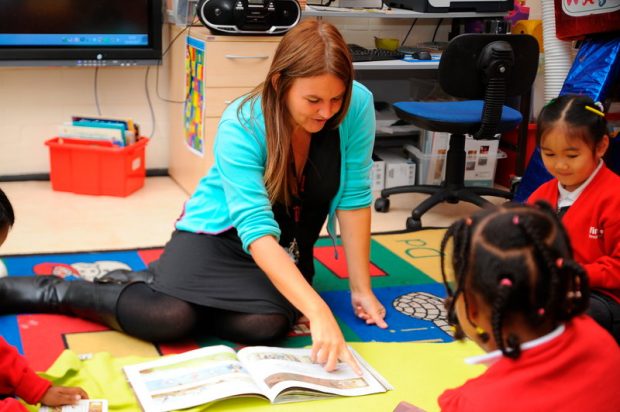
Amy Finch, Head of Strategic Evaluation, and Helen Matthews, Specialist Advisor, Initial Teacher Education, discuss the findings of our ITE research and why it’s the right time for a new inspection approach.
The last year has been incredibly challenging for education. Schools and other providers worked valiantly to keep the show on the road through repeated lockdowns. While it might not make the headlines in the same way, initial teacher education (ITE) is no exception. Over the past 12 months, ITE partnerships have also had to work differently to make sure that trainee teachers are prepared for the classroom.
In June last year, we introduced a new framework for inspecting ITE partnerships, which puts a much greater emphasis on the quality of the ITE curriculum. We were due to begin these inspections in January 2021, but they were put on hold because of the third national lockdown. As a result, no ITE partnership has had an inspection under the new arrangements.
Instead, we decided to do some research in the spring term into how partnerships have responded to COVID-19 (coronavirus) and how the ITE curriculum has moved on since we introduced the new framework. We carried out remote research visits to over 70 ITE partnerships – about a third of the sector. Today, we’ve published our findings.
Systemic challenges
It’s clear that some partnerships have done a good job of helping trainees to carry on learning during COVID-19. Moving to remote learning was actually beneficial in some cases – maintaining and even improving access to the curriculum for trainees. And many trainees said that their partnership had done a good job of supporting them with their emotional well-being during a very difficult time.
Despite this, significant challenges remain – many of which were likely systemic issues before the pandemic. Above all, there was a lack of curriculum ambition across too many partnerships that took part in our research. Very few had gone beyond incorporating the minimum statutory curriculum entitlement (the core content framework, or CCF), where it applies, into their plans.
An over-reliance on placements
We found that some trainees are not sufficiently taught what or how to teach in a phase or subject before being expected to teach it. Many are being thrown in at the deep end and are getting most of their learning during school placements. Aside from being a stressful experience for trainees, this makes it much less likely that trainees leave ITE with sufficiently good knowledge of their subject and phase, which has a knock-on impact in schools.
We also found that some mentors were relying too much on trainees to let them know what they had already learned, and what they needed to work on, rather than making sure trainees were getting the essential building blocks. There was a perception from trainees that ‘we learn by doing’ and that the training centre ‘assumes we have experience of the areas of learning’. This was particularly apparent in the early years and at primary level, where learning subject fundamentals, like early reading, is essential.

The impact of COVID-19
This over-reliance on placements to make up gaps in curriculum content means that the ITE sector as a whole has been vulnerable to the impact of COVID-19, as trainees simply haven’t had access to a full range of teaching experiences this year.
Despite the best efforts of many partnerships, trainees have not had the rounded education that they would normally. Many have lost out on vital experience, for example in managing behaviour, while some primary trainees have had fewer opportunities to teach early reading and phonics. And, just like their pupils, trainees have missed out on experience when it comes to teaching subjects that require specialist equipment to practise, like music, PE and science.
All this considered, it’s very likely that all trainees will need some extra support in their first year as newly qualified teachers (NQTs), and possibly even longer.
Moving forward
The last year has seen an increase in teaching applications. This has been driven in part by the pandemic, with people changing careers perhaps more than usual and graduates seeing teaching as a good career path in an unsettled job market. For a profession that has historically struggled with recruitment and retention, in some ways, is good news. However, we have to make sure – with an increasing number of trainees in the system – that we are getting the basics right and giving future teachers solid grounding. Children have already missed out. We cannot afford to have teachers that are also behind in their own learning.
We hope that today’s research will help to spur on some much-needed action on the ITE curriculum – supported by our new inspections, which started this month. It’s fair to say that the new approach is tougher than what went before, but, as today’s report shows, it’s tougher with good reason.
Our new inspections put the curriculum front and centre of teacher training. Partnerships will only be able to get a judgement of good or better if they deliver an ambitious, rigorous curriculum. This means, at the very least, that primary and secondary partnerships should plan and teach a curriculum that incorporates all the material set out in the CCF – and ideally more than that minimum.
Ultimately, this is the right thing for new teachers, who deserve to start their career on firm footing. But, most importantly, it’s the right thing for their pupils. As the effort to get children back on track is underway, having exceptional newly qualified teachers, ready to hit the ground running and play their part in the education recovery, couldn’t be more vital.